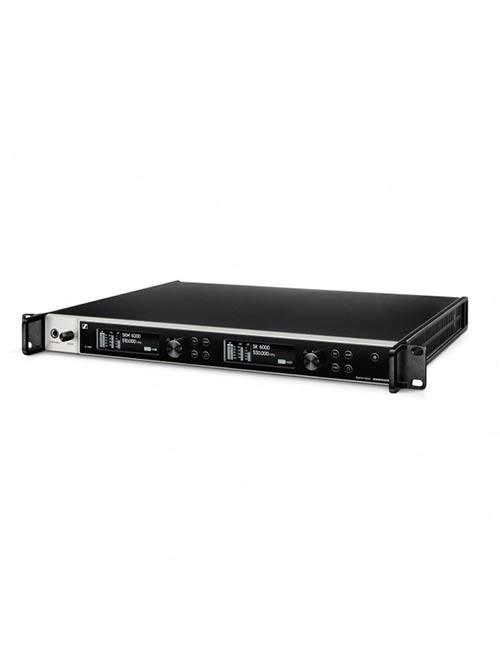Sennheiser EM 6000 is a two-channel digital receiver and operates over a bandwidth of 244 MHz (470-714 MHz) that is covered by the three transmitter versions (470-558 MHz, 550-638 MHz, and 630-718 MHz). For multichannel systems, up to eight receivers can be cascaded without the need for an additional antenna splitter since it is built into the receiver itself; the multichannel system then operates with a single pair of antennas.
System latency is 3 milliseconds.
Superior reception, reliable audio
Reliability has always been a hallmark of Sennheiser wireless systems, and Digital 6000 fulfills this promise by employing true bit diversity, transmission error correction, and additional intelligent error concealment.
True bit diversity ensures significantly better reception quality than is available with other systems. While diversity or true diversity use the RF signal from a single antenna or the audio signal from a single receive path, respectively, true bit diversity uses both receive circuits and combines their information to create the optimum receive signal in this way.
Digital 6000 receivers are equipped with a Link Quality Indicator that ensures that problems are seen before signal losses arise. If, as is the case in difficult RF environments, the signal was momentarily degraded to such an extent that transmission error correction could not perform any repair, the Digital 6000’s intelligent error concealment is activated. By employing intelligent learning algorithms to replace the deteriorated signal, the Digital 6000 still transmits perfectly where other digital systems might fail. For data security, an especially important feature for conferencing and business use, Digital 6000 enables AES 256 encryption.
The EM 6000 receiver features an easy-to-view white OLED display that provides a quick overview of the RF signal, link quality, audio signal, battery status, frequency and encryption. Several screens provide easy access to additional information without the user having to search through complicated sub-menus. Messages of critical operating and error conditions are shown directly on the display.







